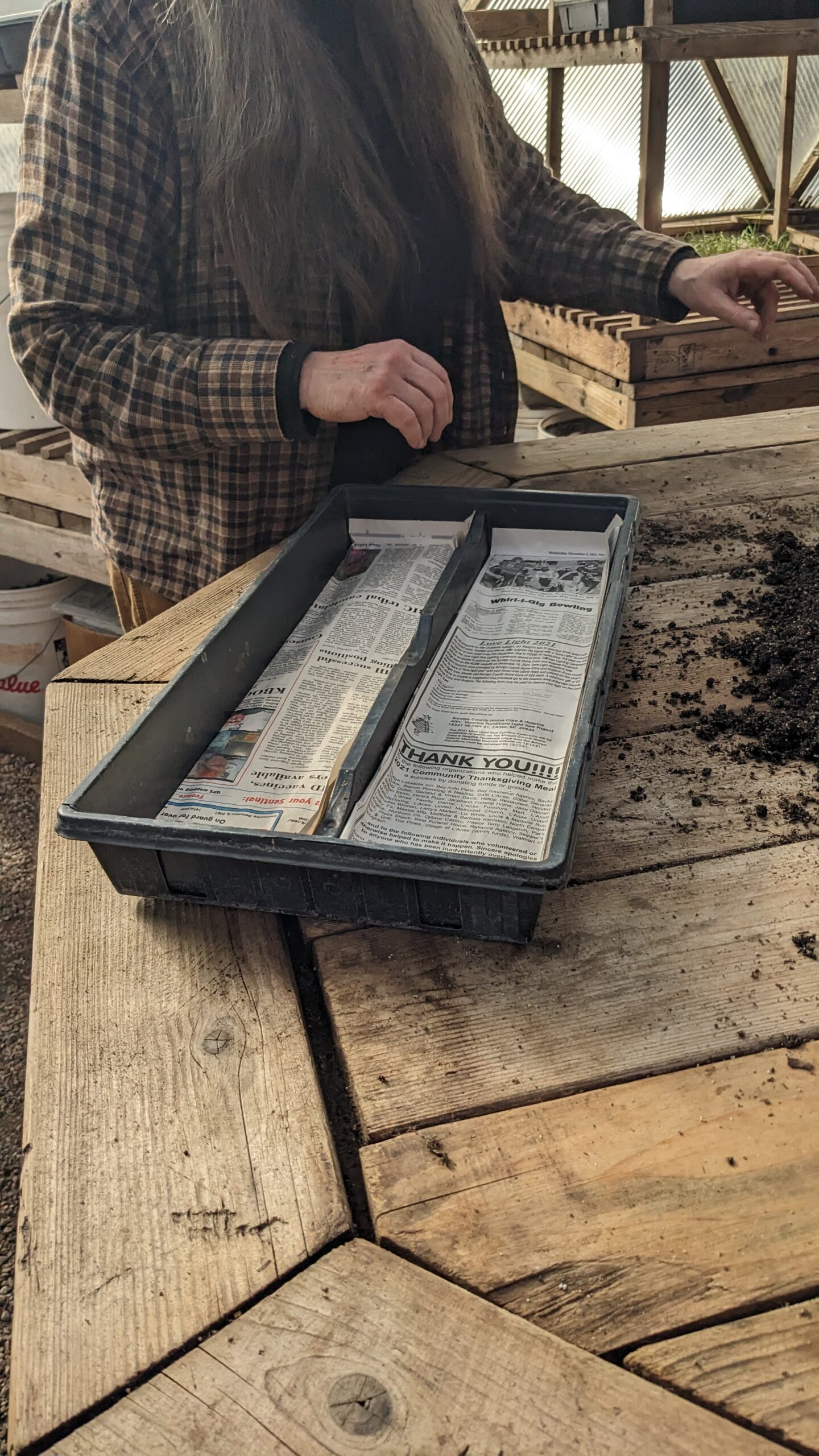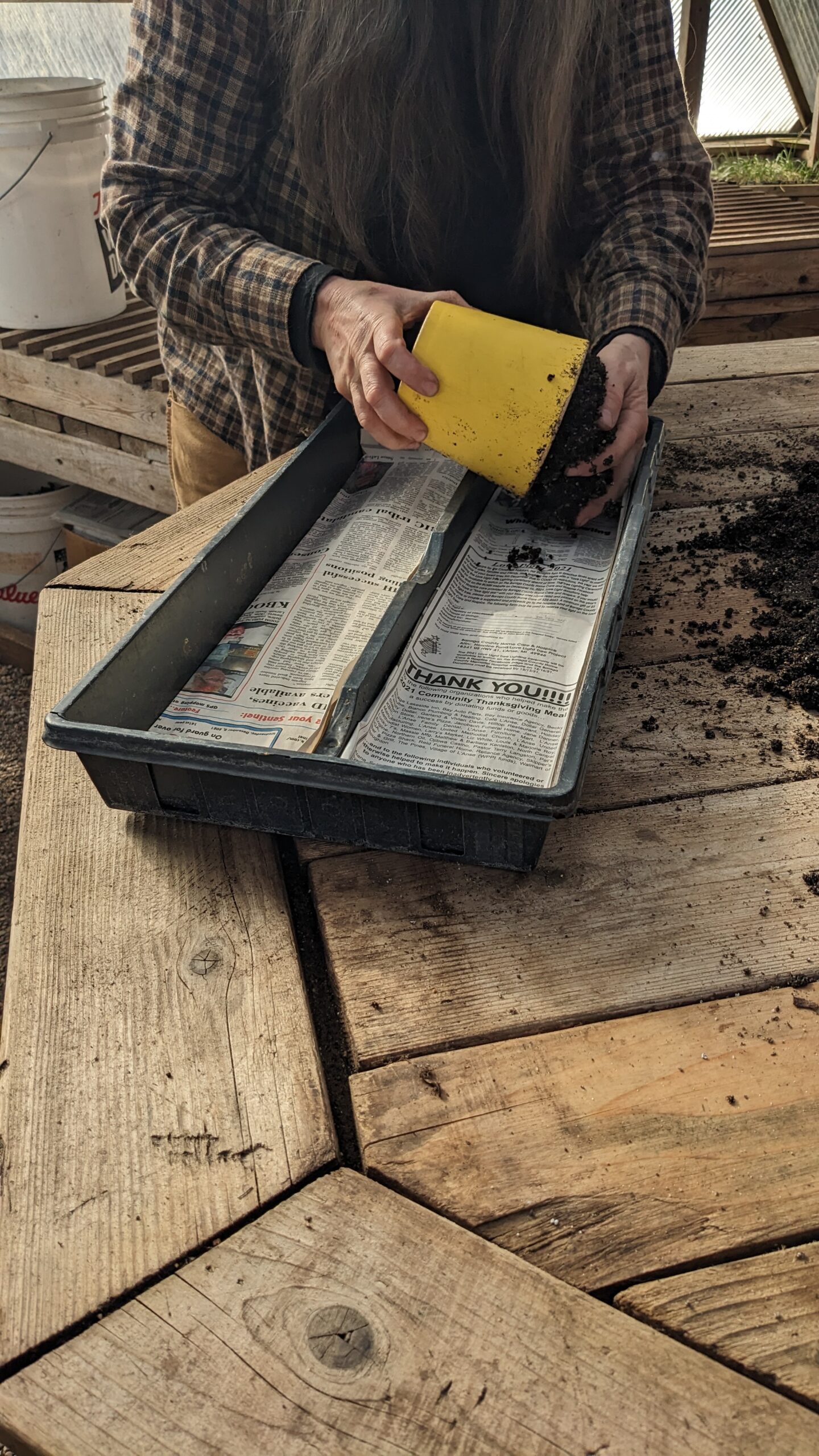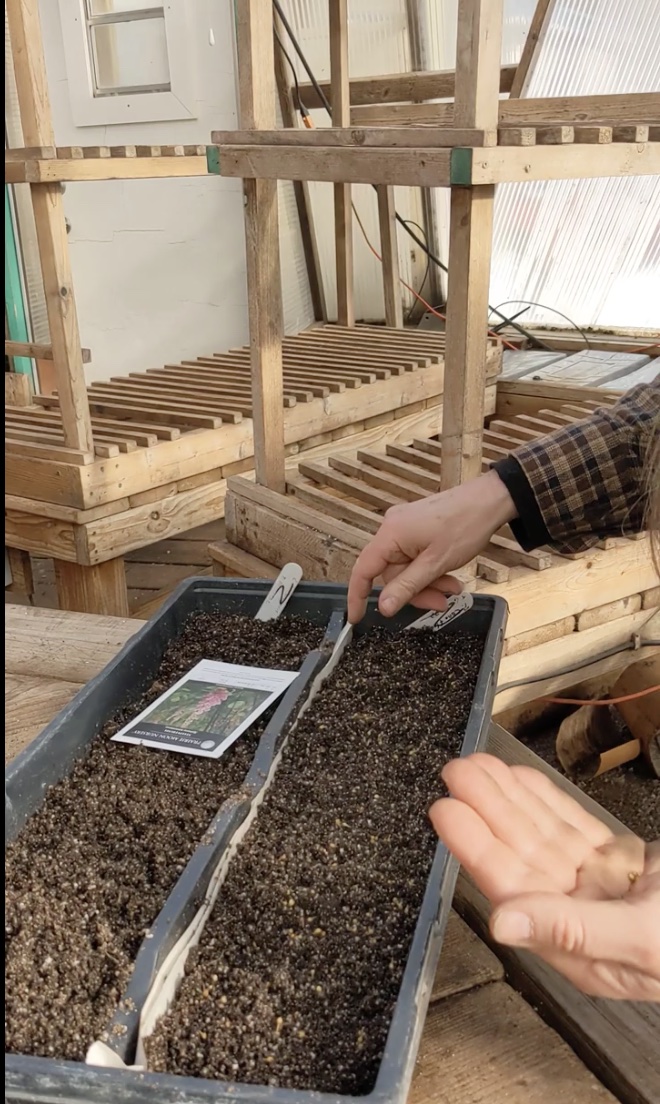Ecologist Karena Schmidt demonstrates how to start native plants from seed. She grows thousands every year for the Keweenaw Bay Indian Community, in Baraga County, Mich. These seeds were started in a heated greenhouse in March; the timing can vary based on conditions and the species’ requirements.
- She begins with Germination+, a professional, organic potting mix sold by Hsu Growing Supply in Wausau, Wis.
- Next, she mixes sand into the potting mix to improve drainage and give young seedlings a taste of the sandy soil they’ll experience upon being transplanted. She uses about 1 part of sand to 5 parts of potting mix. Check out builders’ supply stores for the sand. Karena typically uses “Tubesand,” which is often used to weigh down the back of pickup trucks.
- After dampening the soil…

… Karena lines her preferred 1020 planting trays with newspaper. This design lets her plant two different species in a single tray. A half a broadsheet folded in half fits into one side nicely. The liner prevents soil from sifting through the tray and can be used to lift the seedlings out of the tray after they have sprouted and their roots begin holding the soil together.

Using her favorite plastic pot, which holds about a quart, Karena adds three scoops of the potting mix–sand mixture to the 1020 tray, dividing it evenly between the sides. When she’s done, the mix is about an inch deep. You don’t need a lot of soil.

Then Karena gently shakes the tray back and forth to even out the soil. The next step is to rough the surface up a bit with a plastic fork or similar implement. This creates nooks and crannies where the seeds can settle.

Karena pours the seeds into the palm of one hand, picks up a pinch, and gently sprinkles them over the surface “like topping a pizza.”
Shaking seeds directly from the packet can result in unwanted surprises, i.e., all the seeds falling out in a clump in one spot.
Note: Be sure your seeds are properly treated before planting. Many native seeds need special preparation, such as a period of chilling, or stratification, before they will germinate.

Next, Karena waters the tray generously until it is soaked; she doesn’t expect to water again for at least 10 days in this heated greenhouse. This nozzle provides a lot of water in a very gentle stream. The watering not only saturates the soil, it also causes the roughened surface to settle around the seeds.

Karena tops her trays off with a thin layer of builders’ sand, about a 1/16th of an inch. The sand serves three purposes:
- discouraging the fungus that causes damping off;
- discouraging fungus gnats; and
- forcing the seedlings to work harder as they poke through the soil, resulting in sturdier plants.
Finally, she covers the tray with a clear plastic topper and places it on a shelf. Now all the plants need is light and love. And all the gardener needs is patience! Most of these plants will be ready to transplant into pots by May.
